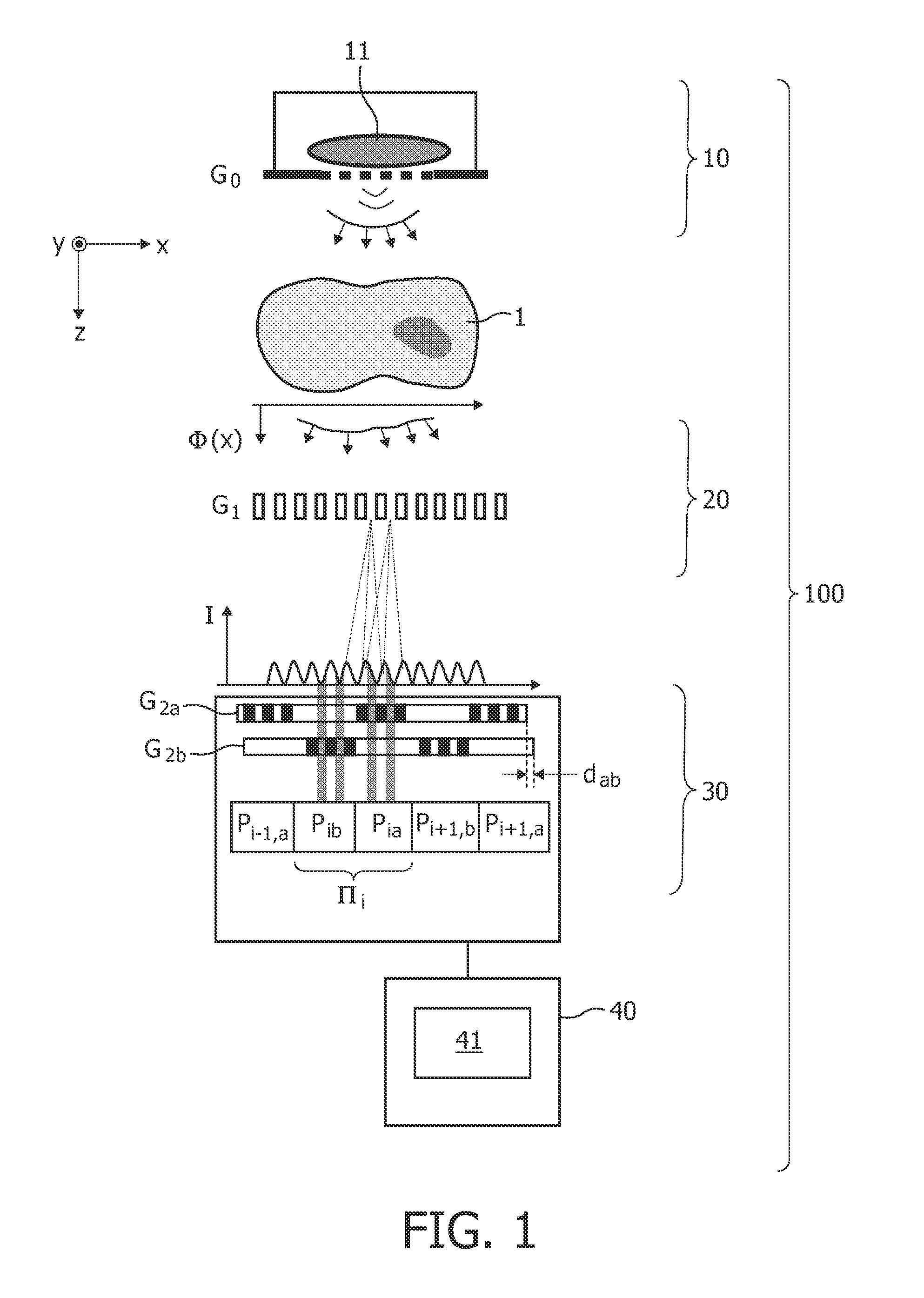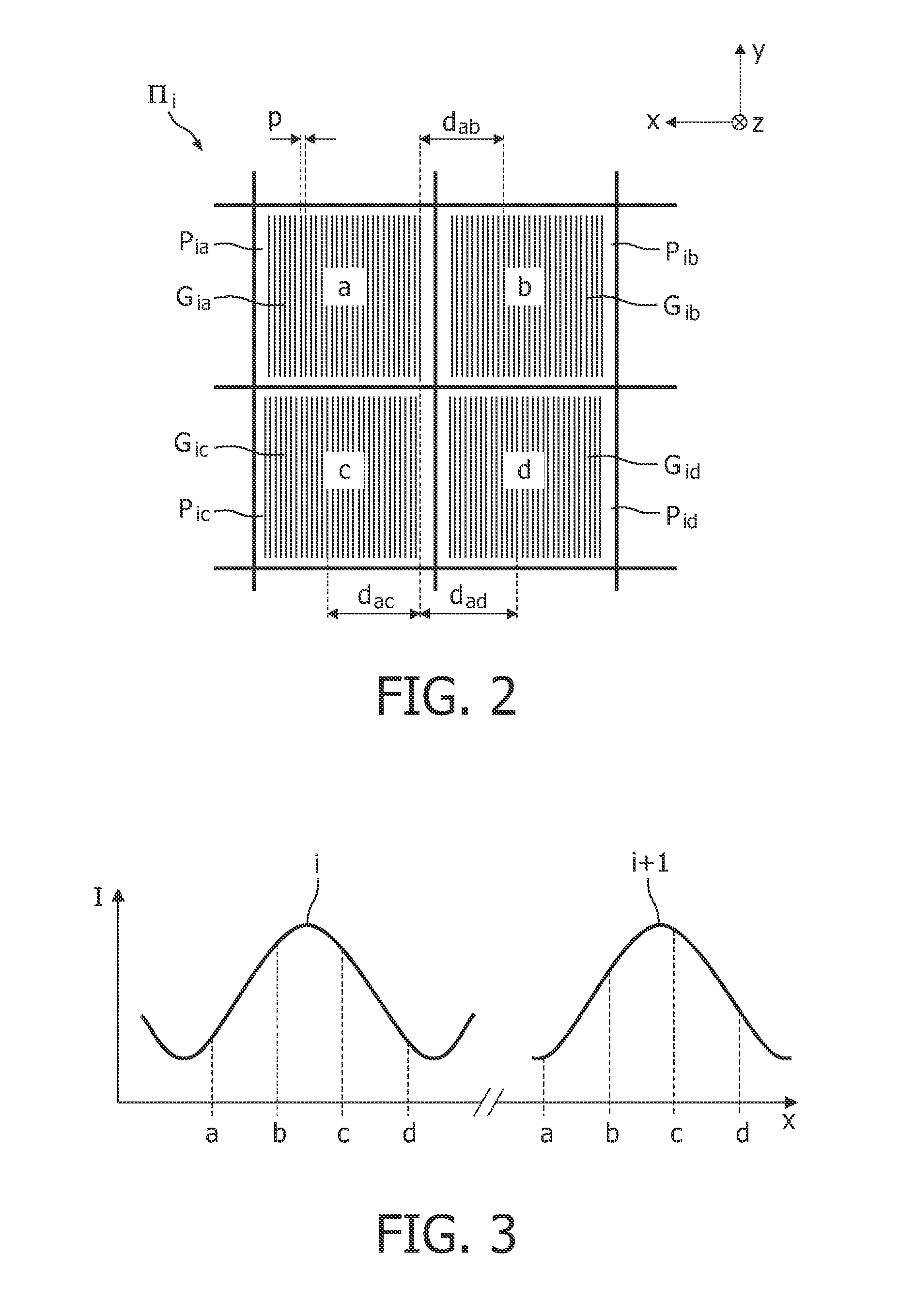X-ray detector for phase contrast imaging
a phase contrast and detector technology, applied in the field of x-ray detectors, can solve the problems of not being able to directly spatially resolve patterns, the pixel size of existing x-ray detectors is (much) larger than the distance between maxima, and the movement of optical elements is a nontrivial mechanical task
- Summary
- Abstract
- Description
- Claims
- Application Information
AI Technical Summary
Benefits of technology
Problems solved by technology
Method used
Image
Examples
Embodiment Construction
[0034]Regarding an X-ray beam as electromagnetic wave with small wavelength, the effect of matter on traversing X-rays can be described by a complex refractive index n=1−δ−iβ. Usually, X-ray imaging refers to the imaginary part iβ of the refractive index, i.e. attenuation of the X-ray fluence by the object under investigation is considered.
[0035]However, X-ray imaging of the phase-shift δ is also possible. In fact, the effect of biological tissue on the phase shift δ is much higher than on the absorption component. This makes soft tissue imaging an attractive application of phase contrast imaging (PCI). It is also important to consider that contrast is not correlated with absorbed X-ray dose. This could make X-ray imaging a low dose modality which is especially important for X-ray CT.
[0036]For years PCI has only been studied in research activities. Then, a simple realization of PCI (to be more specific “differential PCI”) has been shown which could also be employed for medical imagi...
PUM
| Property | Measurement | Unit |
|---|---|---|
| phase contrast | aaaaa | aaaaa |
| phase shift | aaaaa | aaaaa |
| phase contrast imaging | aaaaa | aaaaa |
Abstract
Description
Claims
Application Information
 Login to View More
Login to View More - R&D
- Intellectual Property
- Life Sciences
- Materials
- Tech Scout
- Unparalleled Data Quality
- Higher Quality Content
- 60% Fewer Hallucinations
Browse by: Latest US Patents, China's latest patents, Technical Efficacy Thesaurus, Application Domain, Technology Topic, Popular Technical Reports.
© 2025 PatSnap. All rights reserved.Legal|Privacy policy|Modern Slavery Act Transparency Statement|Sitemap|About US| Contact US: help@patsnap.com



